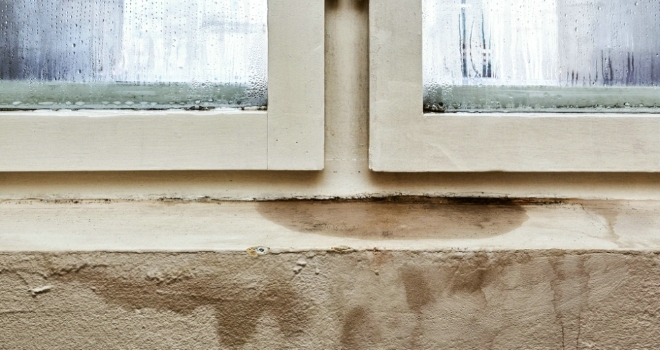
Kate, who is founder of PropertyChecklists.co.uk and consultancy Designs on Property Ltd, urged landlords and agents to act in a report on damp, condensation and mould in the PRS commissioned by the TDS Charitable Foundation, The Tenancy Deposit Scheme's sister charity.
The report finds that 41 per cent of renters in its survey have experienced mould and 38 per cent have experienced damp. It also clarifies where responsibility lies for fixing instances for damp, condensation and mould, and sets out a plan to eliminate it from the PRS.
Kate said: "Damp and mould is undoubtedly one of the biggest problems in the UK PRS effecting the lives and properties of literally millions of people, but the problem is completely avoidable.
By tackling these perennial problems, we can significantly improve the PRS, not only in terms of the quality of the tenants' experience, but also the value of properties and landlords' yields.
There are a number of steps that the sector as a whole must take to drive out damp, condensation and mould. Many people, including residents, landlords and even agents, do not recognise the first signs of these problems occurring, or understand how to fix them. There is also confusion over whose responsibility it is to treat the problem, so the first step is to educate the PRS on damp, condensation and mould in terms of prevention, identification, and treatment.
A tenant checklist could be introduced to assess a property before a lease begins, or more comprehensive surveys before buy-to-let mortgages are granted could help avoid substandard properties with existing water issues entering the market.
Although damp, mould and condensation can be the basis of disputes between tenants and landlords over who should shoulder the burden of correcting it, it is always in the landlord's interest to nip it in the bud and fix the problem.
Damp and mould can lead to respiratory and health problems for the tenant for whom landlords are legally obliged to provide and maintain a safe and comfortable property. If a tenant identifies a moisture problem in the property, it is their responsibility to report it in writing to the agent or landlord. If they do not respond within 14 days or fail to make repairs, they may be unable to evict the tenant further down the line.
Not only are there legal obligations on landlords to bear the burden of damp and mould repairs, but if left untreated, the problem will only spread, costing more to fix, reducing the resale value of the property and its potential rental income.
The good news is that damp, condensation and mould are all treatable, and if caught and diagnosed properly early enough, are relatively inexpensive to correct. Contrary to the belief of some landlords and some of the trades, it cannot simply be painted over, or washed off, and an expert contractor should be hired to repair the problem.
If we can effectively educate the PRS to resolve the prevalence of damp, condensation and mould, we will be improving the lives of millions of people, while increasing house prices and potential rental incomes.
Damp, condensation and mould are some of the biggest problems the industry faces, but they don't have to be.”





